atmasphere
Active member
If you keep this up there's a good chance it will look better than when it was new...
If you keep this up there's a good chance it will look better than when it was new...
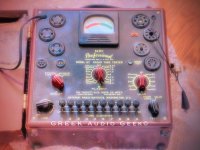
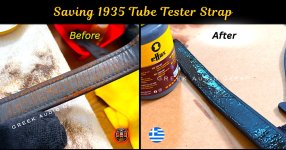
I have and you're right - I would never trust them due to age. I think that would be an accident waiting to happen.Had you considered having someone make a strap for you? If the leather is rotted it can give away without warning.
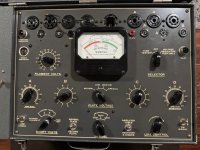
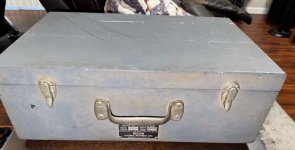
Fabulous tester! I'd be tempted on something like that to give the case a nice vintage finish such as a wrinkletex battleship gray finish.Pretty excited about today's score.
After months of looking for the right one at the right price, I got a Weston 798 1940's tube tester.
Very different than Hickok's, many feel it's more accurate than the Hickoks. I can't say if that is true or not, however it DOES use a 5KHz signal feature, and the Weston testers place higher voltage on the plate of the tube which is supposed to give it more accurate readings.
I will also say when the FAA bought tube testers to be used in the towers and airplanes, they went with the Weston version, not Hickok.
It's right on that line of being new enough to test a very wide range of tubes I use, while still being old enough to get the variety of 4 pin tubes I have.
As testers moved into the 1950's, many of them dropped 4 pin sockets all tougher (think 2A3, 45, 300B). Or if they didn't drop the 4 pin, it was a secondary function so the testing of those tubes wasn't the most accurate.
This one has a very good faceplate, the owner sent me pics of it on the multimeter so I know it's accurate and working, AND - my favorite part - the outside metal case needs LOTS of TLC. I'll defiantly be working some magic on the case.
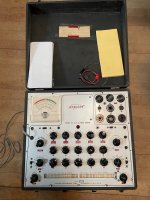
Fabulous tester! I'd be tempted on something like that to give the case a nice vintage finish such as a wrinkletex battleship gray finish.
This is one I've had on hand for a while; not as nice as that but is a true transconductance tester:
View attachment 34798
Correct. Seems like most of the wood pieces I've gotten from the 30's are an old version of lacquer which mimics today's Spar for sure.The prewar test gear I've seen often had a finish that looked like spar varnish.
